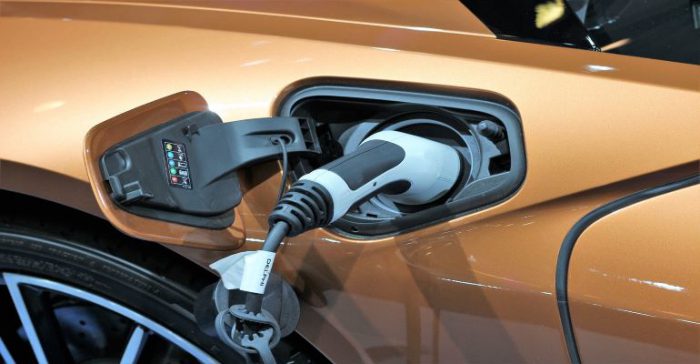Taylor Patterson, ERS
Welcome to the world of electric vehicles (EVs) – where cars use electricity and battery storage to get around, replacing gasoline and reducing air pollution in an effort to minimize the human population’s carbon footprint! EVs are a booming trend in the auto industry, particularly as consumers look to make more environmentally conscientious decisions and realize some of the unique benefits EVs offer. With their increasing popularity, it’s important to know what EVs are and why they’re taking off – so let’s start with some basics!
What is an EV?
Electric vehicles, as their name suggests, use electricity as a power source rather than gas, therefore minimizing or entirely eliminating gasoline engines and the greenhouse gas emissions that result from their operation. There are two main types of EVs: all-electric vehicles (AEVs) and hybrid electric vehicles (HEVs). Let’s dive into this alphabet soup!
- All-electric vehicles run solely on electricity. They are all-electric, all the time. AEVs have zero tailpipe emissions, unlike internal combustion engine vehicles (ICEVs), and use electric motors for propulsion. There are two types of AEVs, which differ in terms of fuel source and how they’re refueled:
- Battery-electric
vehicles (BEVs) are 100% powered by electricity that’s stored in a battery.
BEVs are refueled using the electric grid by plugging into EV chargers to
recharge their batteries – just like how you’d recharge your cell phone (only
with a lot more power!). BEVs have the largest batteries of all types of EVs
and are the most popular type of AEV, with a number of models currently on the
market and many more being made available by automakers in the coming years.
- Fuel-cell electric vehicles (FCEVs) are powered by electric motors and fuel cells, which convert hydrogen into electricity through a chemical reaction. FCEVs store hydrogen in an onboard tank and are refueled at hydrogen stations. FCEVs are not very common in the US, though some models are available and some fleets have adopted them.
- Hybrid electric vehicles differ from AEVs because they combine the battery of a BEV with the gas-powered engine of an ICEV – hence the “hybrid” moniker. There are two main types of hybrid vehicles, which primarily differ in terms of battery size and how their batteries are charged.
- Plug-in
hybrid electric vehicles (PHEVs) typically operate first in “all-electric
mode,” when the battery has the most charge, and then switch over to using the
combustion engine when needed. Drivers refill the battery by plugging it in at
an EV charger, just as they would for a BEV; but drivers must also refill their
gas tanks at gas stations. PHEVs offer drivers the ability to go all-electric
(and tailpipe emissions-free!) for short trips, under 50 miles, with the
flexibility of the gas engine for longer trips. Most trips – i.e., a daily
commute for work or errands – fall within the all-electric distance. PHEVs have
been seen as a “transition vehicle” to introduce people to the nuances of
electric transportation while retaining access to existing gasoline
infrastructure. PHEVs typically have smaller batteries than BEVs and smaller
gasoline engines than ICEVs. In addition to extending beyond the vehicle’s
all-electric range, the combustion engine may also be utilized for high-power-draw
activities, such as fast acceleration or when passengers turn on the heat or
air conditioning, which can put too much demand on a PHEV’s small battery.
- Hybrid electric vehicles (HEVs) use regenerative braking to recharge. Their batteries are fully self-efficient and do not rely on electricity from the grid, but drivers must still refill their gas tanks at gas stations. The small batteries of HEVs can provide some all-electric, low-speed range, additional power during acceleration, and a way to reduce idling emissions.
How do EVs work?
[imagelinks id=”1″]
The diagram above helps explain the mechanics behind how EVs work. All EVs need electricity, to some extent, for power. To get this electricity, many EVs must plug in at a charging station. The diagram above shows the plug-in connection above the front driver-side tire – the Charge Port nozzle looks like it is for gas, but that’s actually where the car plugs in to receive power to charge its battery. The electricity then passes through the Onboard Charger before being stored in the Traction Battery Pack, which sits under the vehicle. The Electric Traction Motor converts electricity from the battery to move the car, while the Power Electronics Controller, DC/DC Converter, and Thermal System all work to ensure that power is distributed to the equipment that needs it and that the battery is safe.
Now, let’s imagine this diagram were of a PHEV – what would we need to add to it? The answer includes essential parts of an ICEV: an internal combustion engine, gas tank, and fuel nozzle; in addition, the battery size would shrink quite a bit to make room for the added parts. Once a hybrid runs out of electric energy, the transmission begins transferring energy from the internal combustion engine, which is fueled by gasoline.
Similar to above, if we were to imagine the diagram represented an HEV, what changes would be made? Like the PHEV, the HEV diagram would require the addition of a fuel tank but would not need a charge port. This is where regenerative braking comes in. The electric generator in HEVs transforms the energy produced from braking into electric power that the car can reuse to drive; the generator then transfers this energy back into the battery for storage until it is needed.
In our next article, EVs 102, we will be diving into the pros and cons of EVs. Here’s a sneak peek:
| Pros: | Cons: |
| – Elimination of tailpipe emissions – Minimal operational costs – Lower maintenance costs – Convenient at-home charging | – Range anxiety – Accessibility of charging stations – Recharge time – Higher initial upfront cost |

